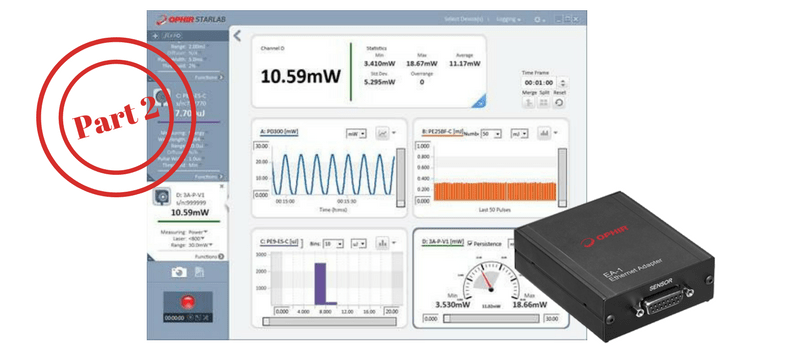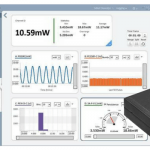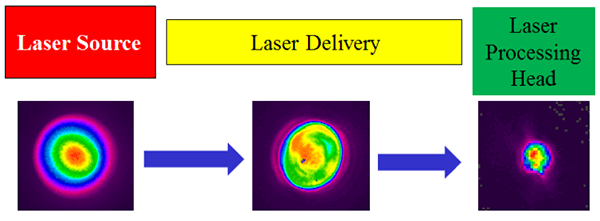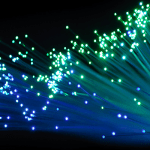M-Squared is arguably the single most important factor when determining the potential efficiency of your laser.
However, it can be a pain to measure. Since the beam quality can be calculated only by taking several measurements along the laser beam caustic, you will typically need to move either the camera or laser source along its axis to get snapshots at different locations.
Here are two approaches you can use that actually DON’T move the camera or the laser:
- BeamSquared for very reliable M2 measurement
- MS-1780 for real time (20 Hz) M2 measurement
As usual, to decide which method is right for you, you’ll have to take a closer look at the tradeoffs…
MS-1780
Both BeamSquared and the MS-1780 are technically accurate to 5%, but for the MS-1780 this is in ideal conditions. In reality, it can be hard to reach that level because it is very sensitive to setup conditions.
The incredible speed is from its patented method of using laser optics to sample the beam at 10 spots in the caustic in one shot. Not only does this mean you can get your measurement without waiting, it also enables real-time M2 tracking to see thermal transients in your lasers and optics, changes occurring over a few seconds of warm-up time.
The tricky part is the setup: You need to get the internal focus in the right place, as well as precise horizontal/vertical alignment.
Note – we’ve noticed that some customer have no trouble at all getting this set up. These lasers tend to be small (~2mm or less) and highly ideal Gaussians (M2 of 1.0-1.5, few imperfections).
So, to summarize:
- Pros: Very fast, small
- Cons: Very difficult setup, hard to attain maximum accuracy (5%)
- Good for: Laser manufacturer production line (or another case where the system can be set up one time and kept fastened for future measurements); small, ideal Gaussians
BeamSquared
If you haven’t heard of this yet, BeamSquared is the next generation of the classic Ophir-Spiricon M2‑200s system for M-Squared measurement. Among improvements made to the older version, this is faster and more compact.
Compared with the MS-1780, though, you might consider this clunky, but consider this:
The BeamSquared can take more samples as required (e.g., ten each in the far field and near field) for much higher accuracy, and likewise is less dependent on setup.
It operates by folding the beam with multiple mirrors, then moving the mirrors along an optical train, stopping for samples as chosen.
(Using more mirrors to “fold” the beam path was one of the main improvements in this generation of M2 measurement system, which allows the BeamSquared to be both smaller and faster.)
- Pros: Much easier to attain ideal (5%) accuracy, ISO compliant
- Cons: Larger, slower
- Good for: Research, any case where ease-of-use or ISO is a primary consideration, large or non-ideal Gaussian beams
Want to learn more about measuring M-Squared? Read: The Difficulties in M-Squared Measurement – And How to Overcome Them









That’s not “real time” if you care about effects faster than 20Hz or video frame rates.